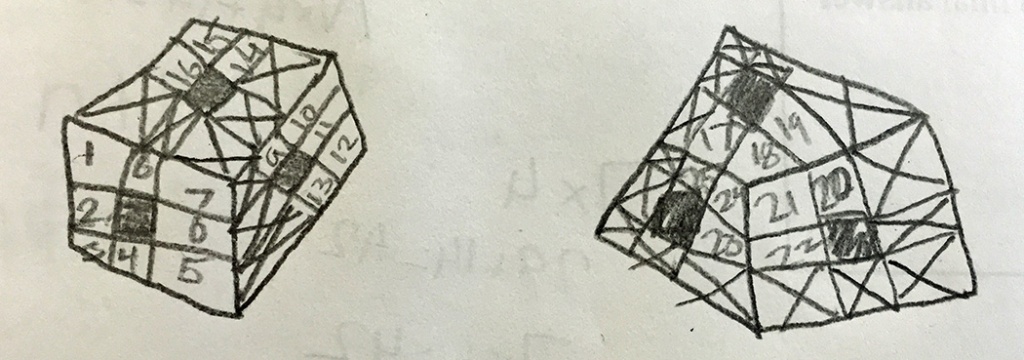I found out first hand how important art instruction is for teaching math from some of our math competitions. When there were problems involving cubes, such as counting their surface area or volume, the students’ ability to make a sketch in the high pressured environment of the competition came into play. It didn’t have to be a nice looking sketch; but it needed to be coherent enough to be a helpful tool for the student.
I liked the sketch above because of the energy it projects and the “Picasso-like” use of perspective. I liked the spirit behind it; the student was obviously determined to conquer the problem at hand. I think that a better understanding of how to depict a cube on a piece of paper would have helped him organize his thoughts.
The amount of time students spend with screens these days is not helping them develop the kind of hand-eye coordination required for a quick sketch. They tend to have little or no practice with making approximate, loose drawings. Obviously, one wouldn’t want to start working on these skills in the midst of a math competition. They need to be developed on a regular basis, so that they can be quickly recalled in time-sensitive situations such a tests. Some students enjoy drawing, but insist on making everything as close to “perfect” as possible. Such students need help in letting go of their perfectionism and putting down their visual thoughts on paper as quickly as possible. The following drawing was made by a student who was initially reluctant to make quick sketches and is making good progress with this skill:

It is a nice drawing, but there is still something tentative about the quality of the lines. One can imagine them being drawn in a very deliberate way.
Now have a look at this quick sketch of a rectangular prism with dimensions. This is the kind of sketching we want our students to develop: quick, and minimalistic in style, yet conveying the essence of the object.

Here is a great resource for gaining the sketching skills that will go a long way in helping students with their 3D sketches:

Draw 3-D by Doug Dubosque. Students as young as 5th graders can grasp the concepts in this book. See if your art teacher has any other ideas. You can go about this whichever way you want; just add some STEAM to your math activities!
